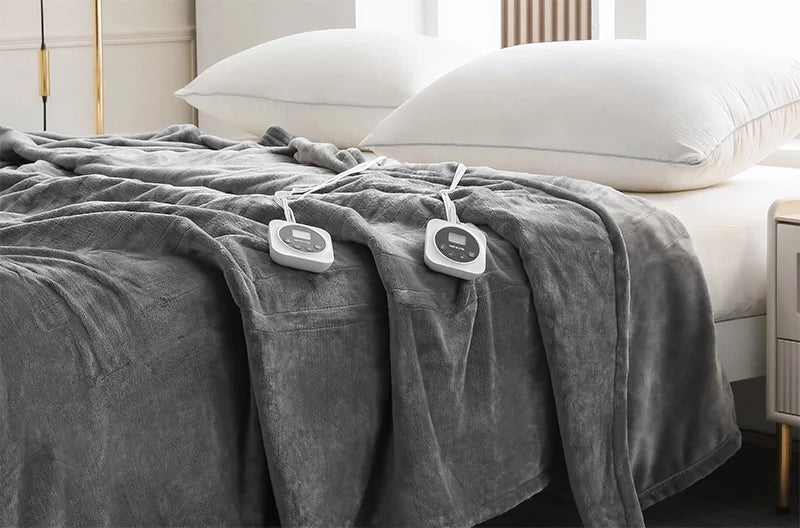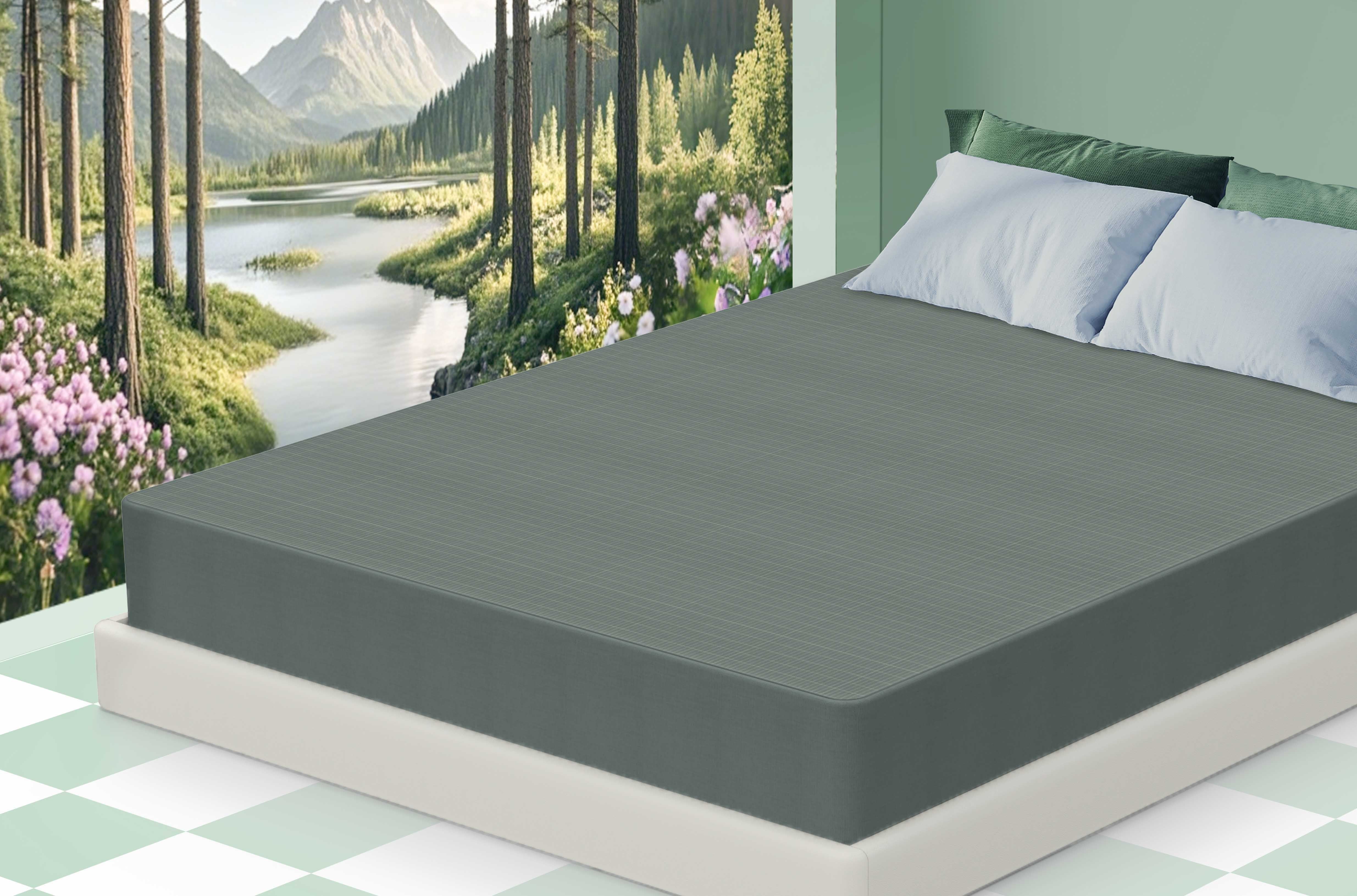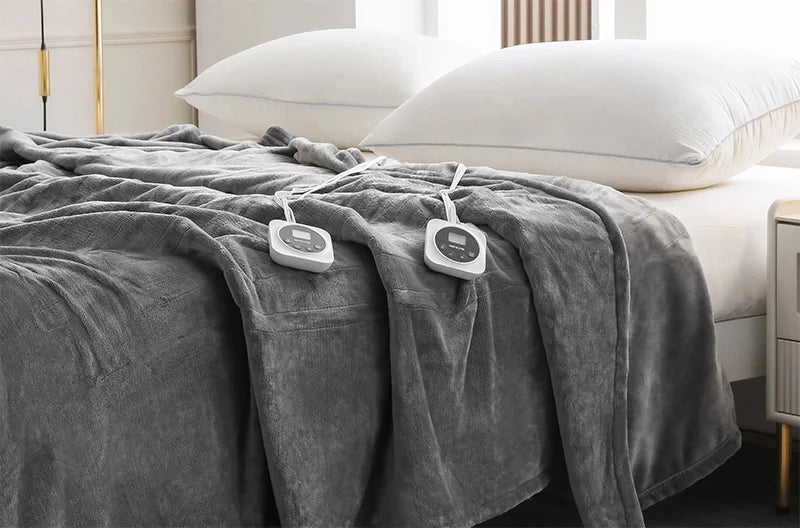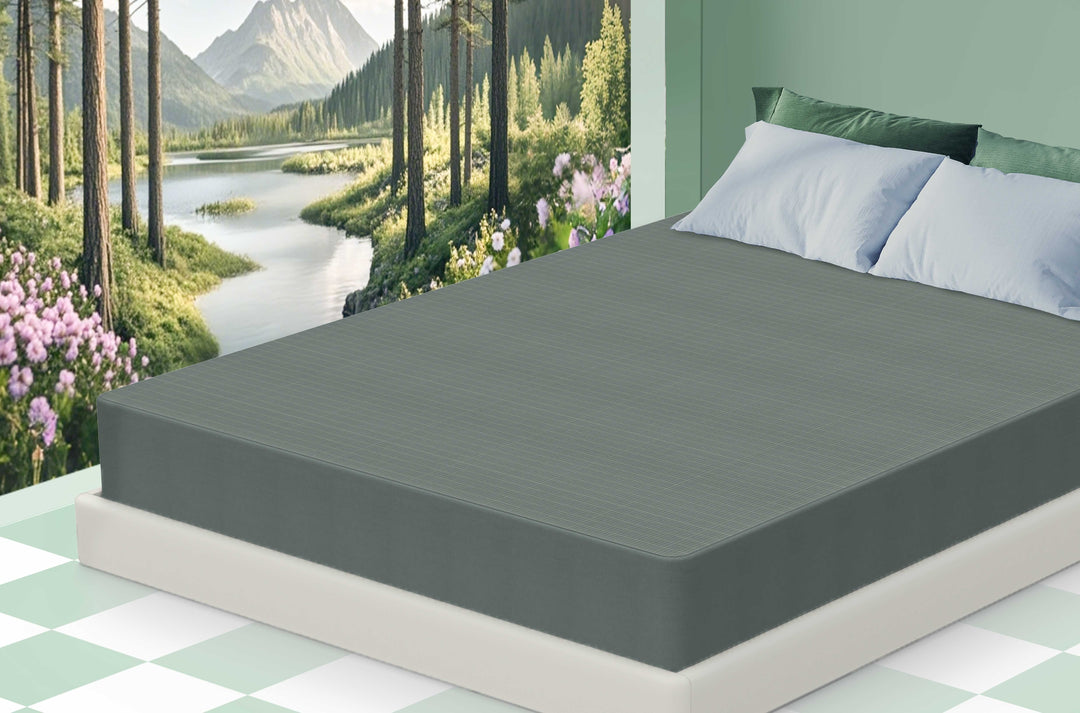How Do Changing Seasons Affect Human Health (And What You Can Do About It)
Ever notice how you're a completely different person in October than you were in July? You're not imagining it. Your body literally rewires itself four times a year, affecting everything from your immune system to your mood. Scientists now know that seasonal changes influence nearly a quarter of our genes—over 5,000 out of 22,000 tested—shifting their activity depending on whether it’s winter or summer.
How Do Changing Seasons Affect Human Health? We'll show you exactly what's happening inside your body each season—and how to work with these changes instead of against them.
Let's get into what's actually happening when the seasons flip.
📍 TL;DR: Seasonal Health Changes at a Glance
| Season | Overall Changes | What Helps Most |
| 🍂 Autumn |
Physical:Immune system weakens, more colds. |
Vitamin D intake, warm balanced diet, exercise to fight fatigue, light exposure in mornings. |
| ❄️ Winter |
Physical: Higher risk of weight gain, low energy. |
Light therapy, vitamin D & magnesium supplements, daily movement, heating pad for cramps/pain relief. |
| 🌸 Spring |
Physical: Higher allergy symptoms; more energy. |
Stay active outdoors, manage allergies, keep consistent sleep schedule, eat fresh seasonal foods. |
| ☀️ Summer |
Physical: Higher hydration needs; skin sensitivity (sunburn). |
Hydrate well, wear sun protection, prioritize cooling sleep environment, balance social activity with rest. |
Physical Health Impacts
Your body goes through the following five major changes every time the seasons shift. Some hit immediately, others creep up over weeks. Let's break down what's actually happening—and what you can do about it.
Immune System Fluctuations
Temperature drops trigger a decrease in your nasal cavity's virus-fighting ability. Cold air literally paralyzes the tiny hairs (cilia) that normally sweep germs away.

When your immune system struggles most:
-
First 3 weeks of fall (September-October)
-
Spring thaw period (March-April)
-
Any time temperatures swing 20°F+ in 24 hours
Spring isn't much better. Your body's been in hibernation mode all winter, making that first wave of allergens hit harder.
Allergies and Respiratory Issues
Seasonal allergies affect 1 in 4 adults, but the triggers change throughout the year:
| Season | Main Culprits | Peak Months |
| 🍂 Fall | Ragweed, mold | September-October |
| ❄️ Winter | Indoor dust, pet dander | December-February |
| 🌸 Spring | Tree pollen, mold | April-May |
| ☀️ Summer | Grass pollen | June-July |
The hidden trigger: When you first flip on heat or AC, you're blasting months of accumulated dust straight into your lungs. Clean those vents before the season changes.
Tiredness and Fatigue
That bone-deep exhaustion isn't just you being dramatic. Your circadian rhythm needs 2-3 weeks to recalibrate when daylight hours shift.

The worst fatigue hits during "shoulder seasons"—those awkward transition weeks when your body can't decide whether to produce wake-up hormones or sleep hormones. Think mid-September or early March.
Why you're so wiped out:
-
Melatonin production shifts by 2-3 hours
-
Core body temperature drops earlier in fall/winter
-
Blood sugar regulation goes haywire
-
Muscles stay tense from temperature adaptation
Heat therapy can help reset your body's temperature regulation during these transitions. Our graphene heating pads deliver targeted warmth that signals your muscles to relax and supports your circadian rhythm—especially useful for that 3 PM crash when your body can't figure out what season it's in. The 10 heat settings let you match your body's needs as it adjusts to seasonal temperature swings.
Skin and Hair Changes
Humidity drops by up to 40% between summer and winter. Your skin loses moisture faster than it can replace it.

What to expect:
-
Cracked hands and lips (week 1-2 of cold weather)
-
Flaky, tight skin all over (ongoing)
-
Increased hair shedding—50-100 extra strands daily (totally normal, grows back)
Fix: Switch to a heavier moisturizer in winter, use a humidifier to maintain indoor air moisture, and increase omega-3 intake to reduce shedding and dryness.
Chronic Condition Aggravation
Existing conditions get worse during seasonal transitions:

-
Arthritis: Barometric pressure changes trigger joint inflammation
-
Asthma: Temperature swings irritate airways
-
Eczema: Low humidity causes flare-ups
-
Migraines: Weather fronts trigger episodes
Track your symptoms listed for 2-3 seasonal transitions. You'll spot patterns that help you prepare.
Once you notice trends, you can prepare in advance by adjusting medication timing before major weather changes, incorporating anti-inflammatory foods into your diet, and staying well-hydrated during periods of rapid temperature or barometric pressure shifts.
Mental and Emotional Health Effects
Your brain chemistry literally changes with the seasons. We're not talking about feeling a little blue—seasonal shifts can trigger legitimate mental health changes that affect millions of people every year.
Seasonal Affective Disorder (SAD)
Seasonal affective disorder hits 10 million Americans hard, with another 20 million experiencing milder SAD symptoms. It's not just winter depression either—about 10% of cases happen during spring and summer months.
The American Psychiatric Association classifies SAD as a major depressive disorder with seasonal patterns. Translation: this is real, measurable, and treatable.

Classic SAD symptoms that wreck daily life:
-
Low energy that makes getting out of bed feel impossible
-
Weight gain (average 9-11 pounds during winter months)
-
Difficulty concentrating at work or school
-
Oversleeping yet still feeling exhausted
-
Craving carbs like your life depends on it
Light therapy works for most people within 2-3 weeks. We're talking 10,000 lux for 30 minutes each morning—brighter than your phone, dimmer than the sun.
Mood and Energy Shifts
Even without full-blown SAD, mood changes follow predictable seasonal patterns:
| Season | Common Mood Shifts | Who's Most Affected |
| 🍂 Late fall | Withdrawal, low energy | People with bipolar disorder |
| ❄️ Winter months | Depressive symptoms increase | Those with major depression |
| 🌸 Spring | Restlessness, mild irritability | People sensitive to seasonal changes, some with bipolar disorder |
| ☀️ Early summer | Anxiety, agitation | Summer depression sufferers |
Mental health professionals now screen for these patterns. If you notice your mental well-being tanks every October, that's data worth tracking.
Stress and Adaptation
Your body treats seasonal transitions like mini crises. Cortisol spikes. Sleep patterns scramble. Your stress response goes haywire for 2-4 weeks each transition.

People with existing mental disorders face bigger challenges:
-
Bipolar disorder patients see more depressive episodes during transitions
-
Anxiety disorders intensify
-
Those on selective serotonin reuptake inhibitors may need dose adjustments
What actually helps:
-
Talk therapy started before your tough season
-
Maintaining strict sleep schedules (yes, even weekends)
-
Exercise that mimics summer activity levels
Sleep Pattern Variations
Seasonal changes mess with your body's internal clock more than daylight savings ever could. The real culprit? Melatonin production can shift by 2-3 hours between seasons.
Why You Can't Sleep When Seasons Change
Winter darkness triggers melatonin production as early as 4 PM. Come summer, it might not kick in until 10 PM. Your brain literally doesn't know when bedtime is anymore.

The trouble sleeping timeline:
-
Week 1-2: Can't fall asleep at the normal time
-
Week 3-4: Wake up randomly at 3 AM
-
Week 5-6: Finally adjusting (just in time for the next change)
Grounding for Better Seasonal Sleep
Here's where grounding sheets become game-changers for seasonal sleep issues. Grounding (also called earthing) helps regulate cortisol rhythms—the exact hormones that seasons throw out of whack.

Our grounding sheets use 95% cotton with 5% pure silver fiber to maintain a constant earth connection while you sleep. Users report falling asleep 15-20 minutes faster during seasonal transitions, plus fewer middle-of-the-night wake-ups when your body's fighting to recalibrate.
The science backs it up: grounding reduces inflammation markers that spike during seasonal changes, helping your body maintain steadier sleep patterns even when everything else is shifting.
Creating Season-Proof Sleep
Non-negotiable sleep fixes for any season:

-
Keep bedroom temperature at 65-68°F year-round
-
Block all light (yes, even that tiny LED)
-
Same bedtime within 30 minutes, every single night
-
Stop screens 1 hour before bed (blue light suppresses melatonin)
The winter blues and summer insomnia don't have to control your nights. Small adjustments to your sleep environment can offset most seasonal sleep disruptions before they start.
Hormonal and Metabolic Changes
Seasonal changes trigger a hormonal cascade that affects everything from your appetite to your reproductive system. These shifts happen whether you notice them or not.
The Hormone Rollercoaster
Your endocrine system responds to seasonal effects like a finely-tuned instrument—except when it doesn't. Less sunlight in winter drops vitamin D production by 50-80%, which tanks your serotonin levels and leaves you feeling sluggish.
What's happening inside:
-
Melatonin levels: Double in winter, making you crave 2+ extra hours of sleep
-
Cortisol: Spikes during seasonal transitions, disrupting your daily routine
-
Thyroid hormones: Slow down in cold weather, decreasing metabolism by 10-15%
-
Testosterone: Peaks in fall, drops in spring (for all genders)
Studies suggest these hormone swings evolved to help humans survive seasonal food scarcity. Now they just give us carbohydrate cravings and mood swings.
Metabolic Shifts Nobody Talks About
Your metabolism changes 15-20% between summer and winter. That's not your imagination—your body literally burns calories differently:
|
Season |
Metabolic Shift |
Real-World Impact |
|---|---|---|
|
🍂 Autumn |
Naturally slow in metabolism |
Increased appetite (“winter prep”), cravings for dense foods |
|
❄️ Winter |
Metabolism slows by 10~15% |
Increased sleepiness, carb cravings, weight gain tendency |
|
🌸 Spring |
Gradual metabolic increase |
More energy, reduced appetite, lighter mood |
|
☀️ Summer |
Higher metabolic rate (heat + activity) |
Better mood, higher energy, lower appetite |
Reproductive Health and Periods
People with periods face extra challenges. Seasonal hormone shifts can throw cycles off by 5-10 days, especially during fall and early spring transitions.
Common period changes:
-
Heavier flow in winter (vitamin D deficiency affects clotting)
-
Worse PMS during seasonal transitions
-
Irregular cycles lasting 2-3 months after season changes
-
Increased cramping when vitamin D drops below 30 ng/mL
Your healthcare provider might suggest vitamin D supplements (2,000-4,000 IU daily) during darker months. It helps keep reproductive hormones functioning properly.
Eat seasonal foods rich in vitamin D and magnesium, maintain exercise routines year-round, and ask your doctor about supplement adjustments during fall/winter to counter slower metabolism and mood dips. A heating pad is an effective tool to relieve menstrual cramps.
Strategies to Maintain Physical and Mental Health Across Seasons
You can't stop seasons from changing, but you can stop them from wrecking your health. Here's your playbook for thriving year-round.
Light Exposure Hacks
Bright light exposure is your number one weapon against seasonal health issues. Serotonin activity depends on it.

Morning light protocol:
-
10 minutes outside, within 30 minutes of waking
-
No sunglasses (unless driving)
-
Cloudy days count—still 10,000+ lux
-
Can't get outside? 10,000-lux light box for 30 minutes
Longer daylight hours in summer mean adjusting your exposure. Sunnier days require less time outside for the same benefit—5 minutes might be enough.
Vitamin D: Your Secret Weapon
A healthcare provider can test your levels, but here's what most people need:

-
Fall/Winter: 2,000-4,000 IU daily
-
Spring/Summer: 1,000 IU (or just 15 minutes of midday sun)
-
Higher risk groups: 4,000-5,000 IU (darker skin, indoor workers, northern climates)
Take it with fat for better absorption. Morning dose helps maintain circadian rhythm.
Movement Strategies by Season
Warmer weather makes outdoor activities easy. Cold weather? You need backup plans:

Season-proof exercise:
-
Have TWO workout options (indoor and outdoor)
-
Match intensity to energy levels (don't fight low winter energy)
-
Schedule it the same time daily—your body craves routine during transitions
-
20 minutes minimum to trigger mood-boosting endorphins
Sleep Non-Negotiables
Getting enough sleep becomes critical during seasonal transitions:

-
Bedroom at 65-68°F year-round
-
Complete darkness (blackout curtains are worth it)
-
Same bedtime within a 30-minute window
-
No screens 1 hour before bed
When to Seek Help
Contact your healthcare provider when symptoms start affecting work, relationships, or daily functioning:

Red flags requiring immediate attention:
-
Suicidal thoughts (call 988 crisis lifeline immediately)
-
Negative thoughts lasting 2+ weeks
-
Can't get out of bed for multiple days
-
Significant weight changes (10+ pounds)
Treatment options that work:
-
Light therapy treatment (70% effective)
-
Cognitive behavioral therapy
-
Vitamin D supplementation
-
Antidepressants for severe cases
Seeking treatment early improves outcomes, and combining different treatment approaches often provides the best relief.
🍂🍁 Fall-Specific Health Tips
Fall brings specific challenges that need targeted solutions:

Week-by-week fall transition guide:
-
Late September: Start vitamin D supplements
-
Early October: Clean heating vents, adjust sleep schedule
-
Mid-October: Begin morning light therapy
-
November: Monitor mood changes, maintain physical exercise routine
Each specific season brings unique challenges, but fall hits hardest. Young adulthood through middle age faces the biggest impact—your body's still adjusting to adult hormone patterns.
Ready to Beat Seasonal Health Changes With Homlyns?
Seasonal transitions affect every system in your body—from immunity to hormones to mental health. Now you know why SAD occurs, when symptoms start, and how to manage all the symptoms before they derail your life.
Key takeaways to remember:
-
Your body needs 2-3 weeks to adjust when the seasons change
-
Light exposure is your most powerful tool against mood disorder symptoms
-
Vitamin D supplementation can prevent 80% of winter health issues
-
Sleep consistency matters more than sleep duration during transitions
-
Track your patterns—most people have predictable seasonal triggers
-
Get help when SAD begins affecting your daily functioning
Your environment shapes how well you handle seasonal changes. That's where Homlyns comes in. Our heated mattress pads and electric blankets maintain consistent sleep temperature year-round, while our grounding sheets help regulate those chaotic seasonal cortisol spikes. When your body's fighting to adapt, the right comfort products make all the difference between surviving and thriving through seasonal transitions.
Reference
- Ghaly M, Teplitz D. The biologic effects of grounding the human body during sleep as measured by cortisol levels and subjective reporting of sleep, pain, and stress. J Altern Complement Med. 2004 Oct;10(5):767-76. doi: 10.1089/acm.2004.10.767. PMID: 15650465.
- Huang D, Taha MS, Nocera AL, Workman AD, Amiji MM, Bleier BS. Cold exposure impairs extracellular vesicle swarm-mediated nasal antiviral immunity. J Allergy Clin Immunol. 2023 Feb;151(2):509-525.e8. doi: 10.1016/j.jaci.2022.09.037. Epub 2022 Dec 6. PMID: 36494212.
- Oschman JL, Chevalier G, Brown R. The effects of grounding (earthing) on inflammation, the immune response, wound healing, and prevention and treatment of chronic inflammatory and autoimmune diseases. J Inflamm Res. 2015;8:83-96. Published 2015 Mar 24. doi:10.2147/JIR.S69656
- Raymond-Lezman JR, Riskin SI. Benefits and Risks of Sun Exposure to Maintain Adequate Vitamin D Levels. Cureus. 2023;15(5):e38578. Published 2023 May 5. doi:10.7759/cureus.38578
- Sloane PD, Figueiro M, Cohen L. Light as Therapy for Sleep Disorders and Depression in Older Adults. Clin Geriatr. 2008;16(3):25-31.
- Tanaka N, Okuda T, Shinohara H, et al. Relationship between Seasonal Changes in Food Intake and Energy Metabolism, Physical Activity, and Body Composition in Young Japanese Women. Nutrients. 2022;14(3):506. Published 2022 Jan 24. doi:10.3390/nu14030506
- Xu X, Liu X, Ma S, et al. Association of Melatonin Production with Seasonal Changes, Low Temperature, and Immuno-Responses in Hamsters. Molecules. 2018;23(3):703. Published 2018 Mar 20. doi:10.3390/molecules23030703
















Leave a comment